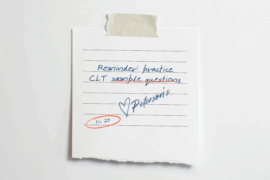Tuition
The major difference between public universities and private colleges lies in how they are funded. This affects students because funding is tied to tuition prices. Most public universities and colleges were founded by state governments, some as early as the 1800s, to give residents the opportunity to receive public college education. Today, state governments pay for most of the cost of operating public universities. They also oversee these institutions through appointed boards and trustees.
This influx of public money is why tuition is lower at a public university. The real cost of an attendance is subsidized. Money raised from tuition doesn’t need to cover all of a public college’s expenses, such as paying faculty.
Meanwhile, private colleges don’t receive funds from state legislatures. They rely heavily on tuition and private contributions. This means tuition rates are generally higher.
Size and Degree Offerings
Another difference between private and public colleges is their size and the number of degrees they typically offer. Private colleges tend to be much smaller than public universities and may have only a few thousand students. Public universities and colleges can be big, and some are huge. One example of a large public university is Ohio State University, home to 42,000 undergraduates.
Students who want a wide choice of majors can find them at public universities. In a single large public university, undergraduates will be enrolled in academic programs ranging from traditional liberal arts to highly specialized technical fields. Private colleges offer a smaller range of majors, but often have a particular academic focus. Some private colleges may emphasize the liberal arts or the fine arts, for instance, while others focus on engineering and computer science.
Class size and demographics
Class-size is another major difference. Private colleges keep classes small, with easy access to professors. At public universities, however, 200 students may be enrolled in some classes, especially in lower-division courses.
Private and public colleges also tend to have different demographics and ratios. For example, in-state students applying to their public universities are admitted in far greater numbers and pay lower tuition than students applying from out-of-state. In contrast, state residency isn’t crucial at private colleges, which results in a greater geographical diversity among the student body.
Public university or private college?
You should identify your goals and consider costs, class size, culture, and environment before choosing between a public university and private school for your college experience. To find out more about what colleges might be right for you, start a college search.
Need help finding your college or university? Search by location, major, admission difficulty, and more with Peterson’s College Search.



